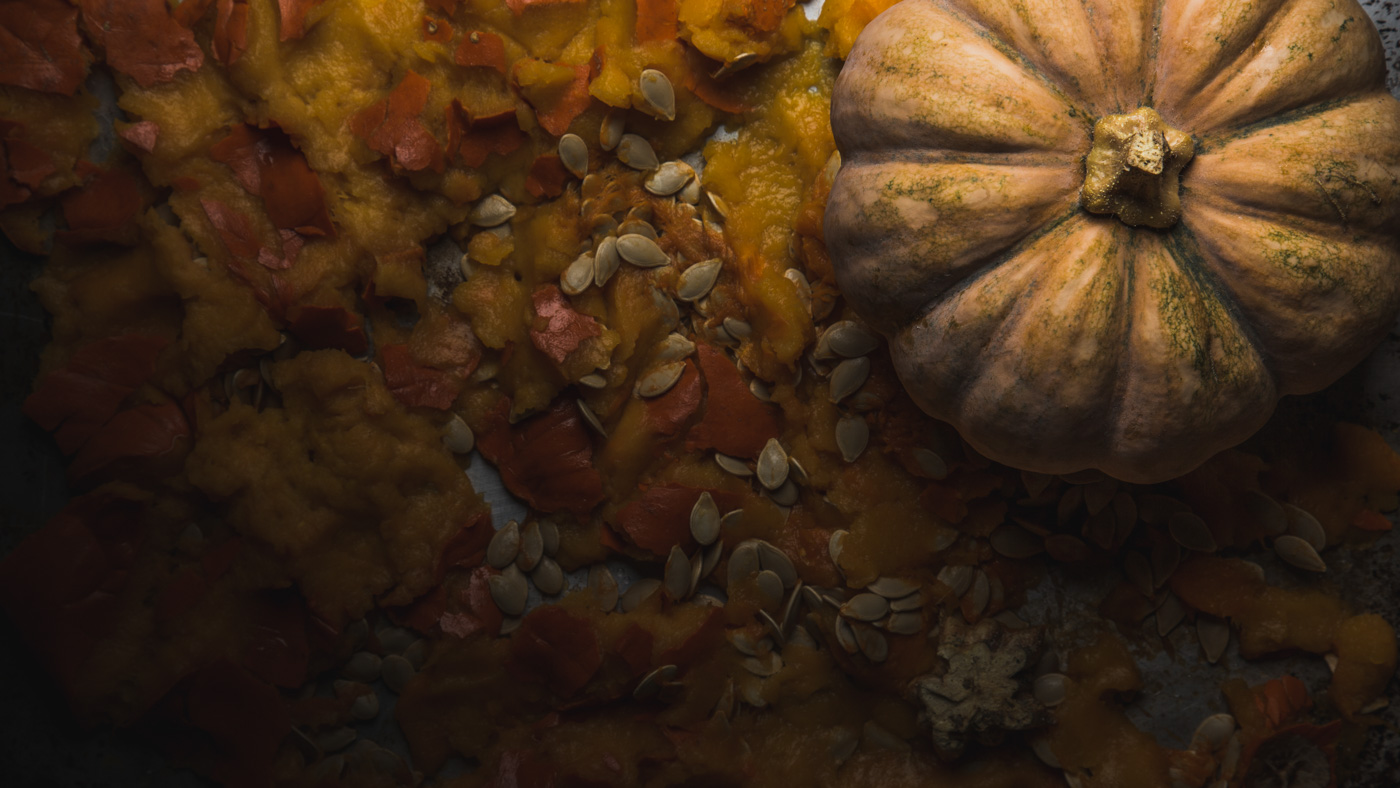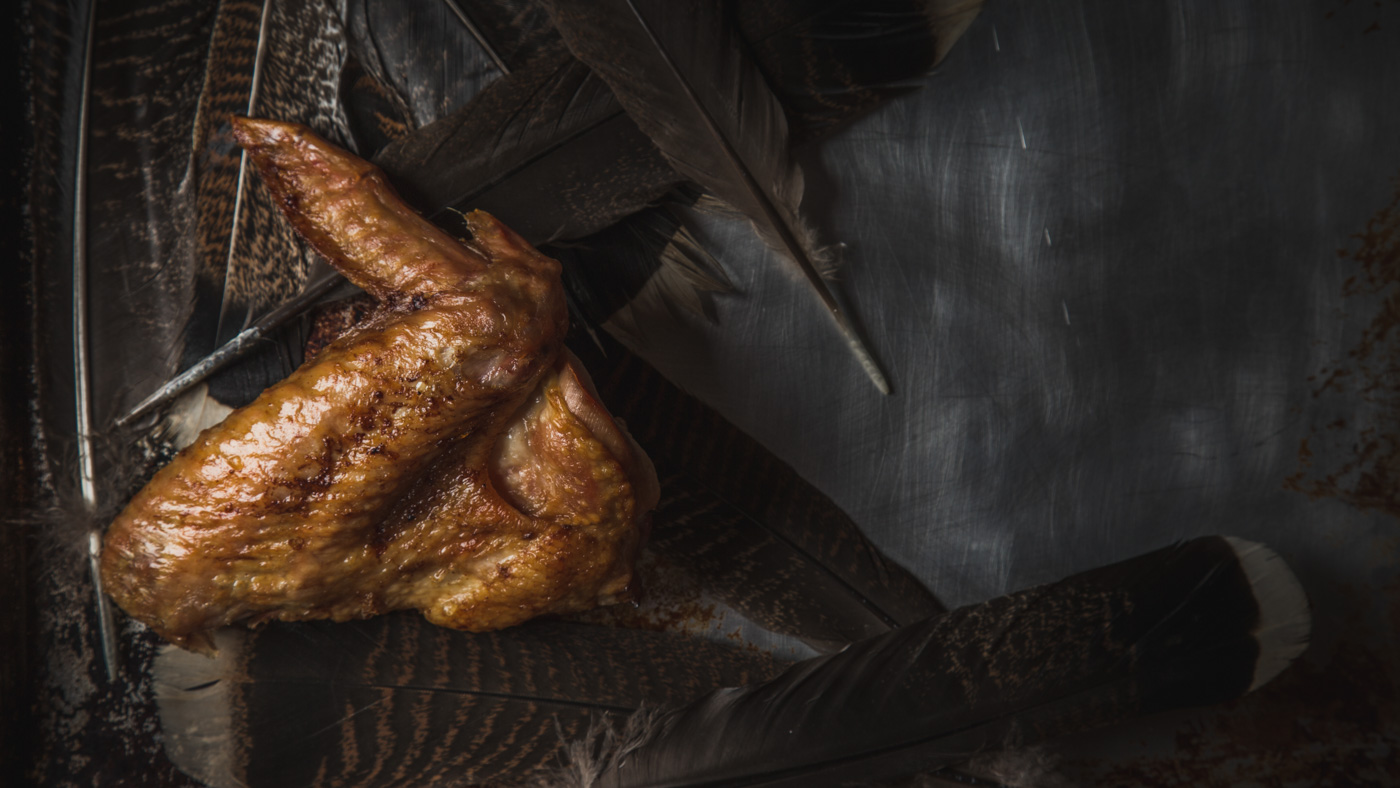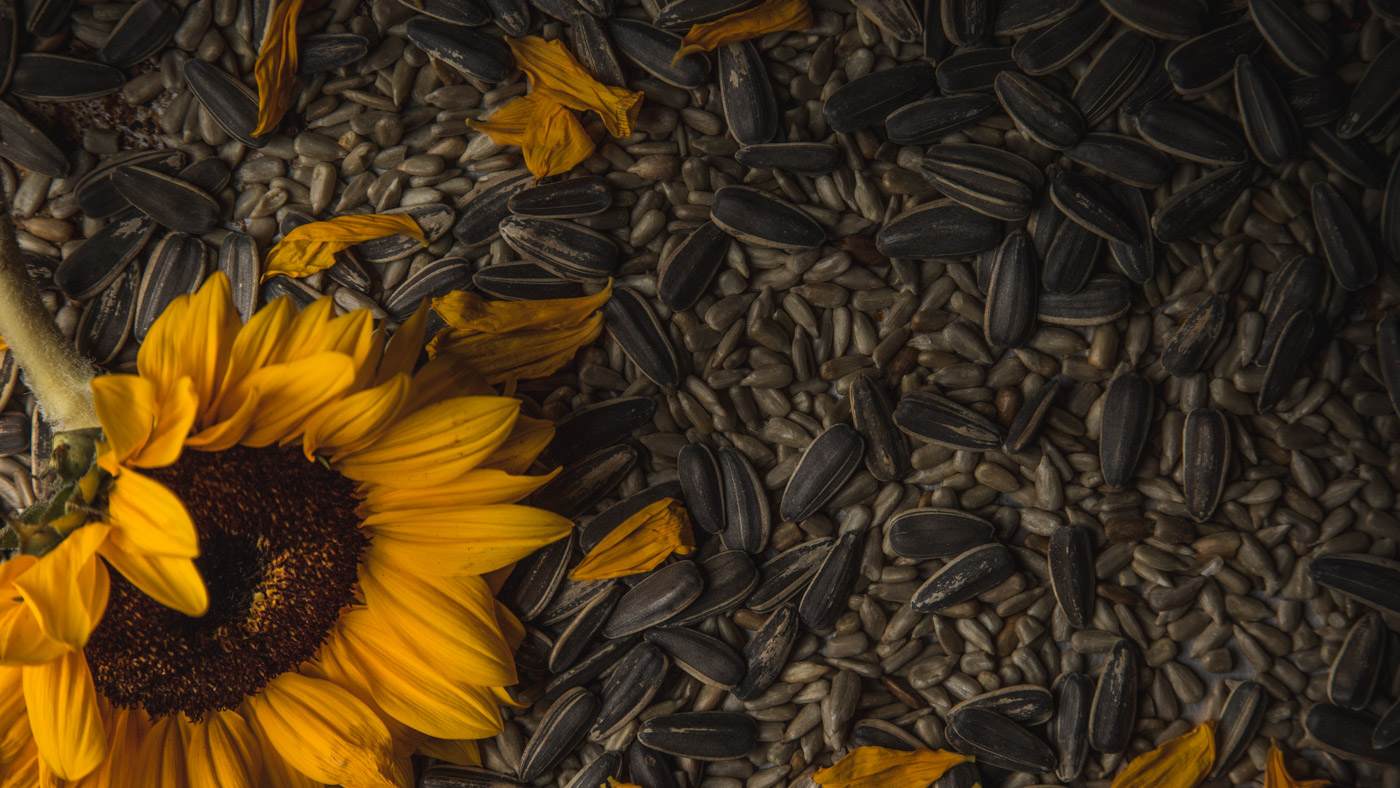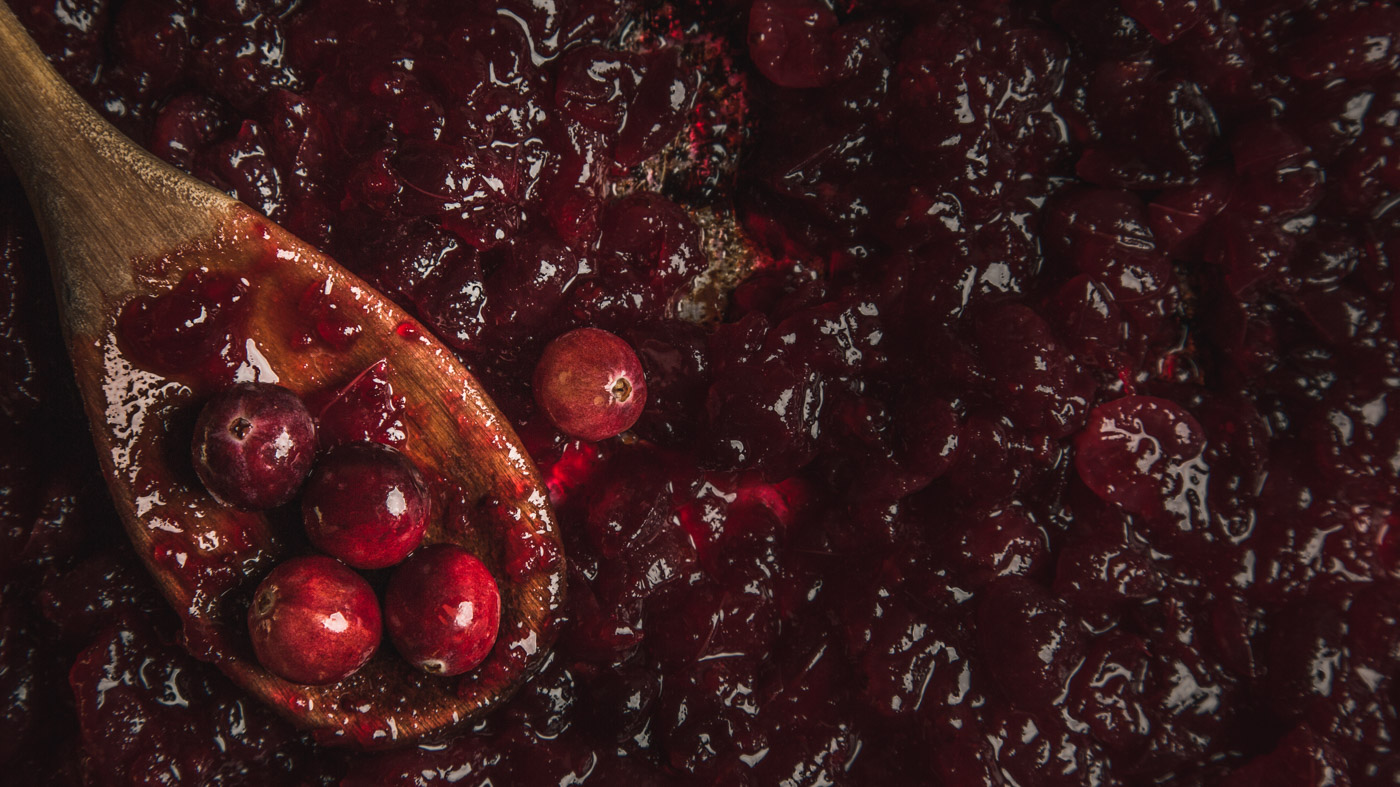The Hero’s Journey
A Primer in the Past Lives of our Favorite American Foods
Words and photography by KATRINA FREDERICK — MARCH 16, 2018
The journey from nature to dinner plate can be full of twists and turns. Tracing the provenance of a fish, or the precise route of a freshly picked apple can often feel like a detective’s assignment. But where does each piece of a dish’s puzzle really originate? Sure, they may come from a farm, or grow wild in loamy soil; but if you look even further back, who plucked the ancestral carrots out of the ground years before globalization placed them in every produce market the world over? Before humans connected immense trade routes over thousands of miles, spanning hundreds of years, flinging seeds and animals far and wide across the planet, every ingredient had a place to call home.
As an American, the pasts of many indigenous edible plants and animals tell the story of adoration, confusion and war, and bring new meaning to foods we eat at celebrations and during our everyday lives. Some, like pumpkin and turkey, oft repeat entries in fall holiday spreads. Others, like tomatoes and blueberries, remind us of summer picnics and Independence Day desserts. Even the humble sunflower seed makes a patriotic appearance at baseball games. Read on for a glimpse into the histories of some truly North American originals.

PUMPKIN
Before its name adorned spice mixtures across the world’s lattes, pumpkin was one of the pillars of Native American cooking, and a hugely important food source prior to colonist arrival in North America. Once taught its versatility, it became a staple for early settlers as well. American Cookery, by Amelia Simmons—the first cookbook ever published by an American—features a recipe for pumpkin (then spelled pompkin) pudding, although a version of pumpkin pie makes its appearance in European cookbooks as early as 1653.
Varieties grow in colors from green and yellow to white and blue, in addition to the iconic orange. They can be stewed, dried, fed to livestock, and even fermented into an alcoholic beverage. In Europe, the squash was considered food fit only for the poor, perhaps influencing Charles Perrault’s decision to turn the pumpkin into the golden carriage in his 1697 version of Cinderella.
The gourd went beyond edible to primarily ornamental with the commercialization of pumpkin carving in the 1970s. According to the USDA, around eighty-eight percent of pumpkins grown today are sold fresh, with most finishing their journeys as autumnal porch decorations.

TURKEY
Reflected in its name, the turkey represents the confusion that stemmed from the discovery of the New World. In many languages, the word for turkey is derived from the country name India, as many in the Old World believed the exotic birds arrived on ships that had landed in the country, and thus named it after its mistaken origin. The Turkish word for the fowl, hindi, also reflects that incorrect assumption. Further blurring the story, the English name for turkey derives from importing a similar looking game bird—the guineafowl—to Europe through the Ottoman Empire; the English believed turkeys originated from the country of Turkey.
Regardless of how it came to be known, turkeys were domesticated by the Aztecs and Native Americans; because of their elaborate plumage, they were considered spiritual guides, their feathers used in clothing and ceremonies. Not often hunted or eaten, the turkey had grown accustomed to living alongside humans and was ill-prepared for European advances. It made them easy targets, and settlers often shot up to one hundred per day, selling them five at a time. Once transported overseas, the turkey’s popularity grew quickly, replacing geese and swan at feasts, and showing up in literature from Shakespeare to Dickens.
Today, ninety-one percent of Americans eat turkey at Thanksgiving, but the top spot for worldwide turkey consumption is regularly held by Israelis, mostly enjoying their turkey in the form of vast amounts of pastrami.

TOMATO
While we closely associate tomatoes with Italian and Middle Eastern cooking, the tomato is a relatively new addition to those cuisines. Brought to Europe in the early sixteenth century by Spanish conquistadors, the tomato had a long road of controversy before it was considered edible.
Highly praised for its beauty, the tomato spread far and wide. However, for nearly one hundred years, they were considered toxic. When placed on pewter plates, the acidic tomatoes would leach lead, and when consumed, caused illness and death. The poisoning was blamed on the fruit, rather than the metal. One attempt to dispel their deadly reputation occured in Salem, New Jersey, in 1820, when a farmer named Robert Gibbon Johnson publicly ate an entire basket of tomatoes. His audience stood shocked when Gibbon didn’t keel over on the spot.
Eventually, tomatoes found favor with consumers, and are now so mass-produced they consistently top the list of most-eaten vegetables in the United States, largely thanks to ketchup and hamburgers. Because of their all-American image, pop artist Andy Warhol found them a fitting capitalist subject, replicating the image of the Campbell’s tomato soup can over and over again.

SUNFLOWER
With their sunny appearance, sunflowers have inspired people and civilizations throughout the ages; the Aztecs worshipped sunflowers, and Van Gogh painted them repeatedly. Early Spanish explorers in Southwest North America carried seeds back with them to Spain, where the flower’s popularity as decoration became common.
In the eighteenth century, Russians began deliberately breeding sunflowers to produce more oil. The Russian Orthodox church had banned fats such as butter and lard during Lent, but sunflower oil wasn’t on the prohibited list due to its relative novelty as a crop. Sunflower farming flourished, but the oil wasn’t widely used for U.S. commercial purposes until Frito-Lay tapped into the market for frying potato chips.

BLUEBERRY
When Robert Frost published Blueberries, an ode to wild blueberries, in the 1914 compilation North of Boston, Elizabeth Frost (no relation) and Frederick Coville were on the brink of revolutionizing the blueberry industry. While the poet only knew the wild, fickle bushes, a cranberry grower in New Jersey and a botanist had teamed up to cultivate the fruit that previously went untamed. Frost and Coville’s work selecting and cross-breeding plants resulted in the variety of blueberry that closely resembles the bright, plump berries we buy in the supermarket today.
Originally used by Northeast native American tribes for nutrition, dye and medicine, the first commercially harvested blueberries were canned during the Civil War to feed Union troops. Since then, the fruit never lost momentum, its color and popularity resulting in the creation of the blueberry Jelly Belly in 1981 for Ronald Reagan’s inauguration.

CRANBERRY
The name cranberry is derived from the shape of the fruit’s flower, which resembles a crane’s head and neck bent elegantly downward. Native Americans in the Northeast found numerous uses for cranberries; they ground them into a paste to spread on wounds, boiled them for dye, and sailors ate them to prevent scurvy, introducing their bodies to some much-needed vitamin C.
The shiny red fruits were also often pounded into pemmican—a mixture of dried meat, fat and dried fruit that lasted months and could be carried on long journeys for sustenance. Pemmican became a vital commodity to fur traders, even sparking a war between rival companies in 1816.
Culinarily, more familiar uses were also discovered; cranberries could be transformed into sauces that European settlers spread on meat, providing the precursor to our beloved cranberry relishes today.
![]()
The Weekend Edition
Get the latest L&T stories and exclusive notes from our editors delivered straight to your inbox—every weekend.
PUMPKIN
Before its name adorned spice mixtures across the world’s lattes, pumpkin was one of the pillars of Native American cooking, and a hugely important food source prior to colonist arrival in North America. Once taught its versatility, it became a staple for early settlers as well. American Cookery, by Amelia Simmons—the first cookbook ever published by an American—features a recipe for pumpkin (then spelled pompkin) pudding, although a version of pumpkin pie makes its appearance in European cookbooks as early as 1653.
Varieties grow in colors from green and yellow to white and blue, in addition to the iconic orange. They can be stewed, dried, fed to livestock, and even fermented into an alcoholic beverage. In Europe, the squash was considered food fit only for the poor, perhaps influencing Charles Perrault’s decision to turn the pumpkin into the golden carriage in his 1697 version of Cinderella.
The gourd went beyond edible to primarily ornamental with the commercialization of pumpkin carving in the 1970s. According to the USDA, around eighty-eight percent of pumpkins grown today are sold fresh, with most finishing their journeys as autumnal porch decorations.
TURKEY
Reflected in its name, the turkey represents the confusion that stemmed from the discovery of the New World. In many languages, the word for turkey is derived from the country name India, as many in the Old World believed the exotic birds arrived on ships that had landed in the country, and thus named it after its mistaken origin. The Turkish word for the fowl, hindi, also reflects that incorrect assumption. Further blurring the story, the English name for turkey derives from importing a similar looking game bird—the guineafowl—to Europe through the Ottoman Empire; the English believed turkeys originated from the country of Turkey.
Regardless of how it came to be known, turkeys were domesticated by the Aztecs and Native Americans; because of their elaborate plumage, they were considered spiritual guides, their feathers used in clothing and ceremonies. Not often hunted or eaten, the turkey had grown accustomed to living alongside humans and was ill-prepared for European advances. It made them easy targets, and settlers often shot up to one hundred per day, selling them five at a time. Once transported overseas, the turkey’s popularity grew quickly, replacing geese and swan at feasts, and showing up in literature from Shakespeare to Dickens.
Today, ninety-one percent of Americans eat turkey at Thanksgiving, but the top spot for worldwide turkey consumption is regularly held by Israelis, mostly enjoying their turkey in the form of vast amounts of pastrami.
TOMATO
While we closely associate tomatoes with Italian and Middle Eastern cooking, the tomato is a relatively new addition to those cuisines. Brought to Europe in the early sixteenth century by Spanish conquistadors, the tomato had a long road of controversy before it was considered edible.
Highly praised for its beauty, the tomato spread far and wide. However, for nearly one hundred years, they were considered toxic. When placed on pewter plates, the acidic tomatoes would leach lead, and when consumed, caused illness and death. The poisoning was blamed on the fruit, rather than the metal. One attempt to dispel their deadly reputation occured in Salem, New Jersey, in 1820, when a farmer named Robert Gibbon Johnson publicly ate an entire basket of tomatoes. His audience stood shocked when Gibbon didn’t keel over on the spot.
Eventually, tomatoes found favor with consumers, and are now so mass-produced they consistently top the list of most-eaten vegetables in the United States, largely thanks to ketchup and hamburgers. Because of their all-American image, pop artist Andy Warhol found them a fitting capitalist subject, replicating the image of the Campbell’s tomato soup can over and over again.
SUNFLOWER
With their sunny appearance, sunflowers have inspired people and civilizations throughout the ages; the Aztecs worshipped sunflowers, and Van Gogh painted them repeatedly. Early Spanish explorers in Southwest North America carried seeds back with them to Spain, where the flower’s popularity as decoration became common.
In the eighteenth century, Russians began deliberately breeding sunflowers to produce more oil. The Russian Orthodox church had banned fats such as butter and lard during Lent, but sunflower oil wasn’t on the prohibited list due to its relative novelty as a crop. Sunflower farming flourished, but the oil wasn’t widely used for U.S. commercial purposes until Frito-Lay tapped into the market for frying potato chips.
BLUEBERRY
When Robert Frost published Blueberries, an ode to wild blueberries, in the 1914 compilation North of Boston, Elizabeth Frost (no relation) and Frederick Coville were on the brink of revolutionizing the blueberry industry. While the poet only knew the wild, fickle bushes, a cranberry grower in New Jersey and a botanist had teamed up to cultivate the fruit that previously went untamed. Frost and Coville’s work selecting and cross-breeding plants resulted in the variety of blueberry that closely resembles the bright, plump berries we buy in the supermarket today.
Originally used by Northeast native American tribes for nutrition, dye and medicine, the first commercially harvested blueberries were canned during the Civil War to feed Union troops. Since then, the fruit never lost momentum, its color and popularity resulting in the creation of the blueberry Jelly Belly in 1981 for Ronald Reagan’s inauguration.
CRANBERRY
The name cranberry is derived from the shape of the fruit’s flower, which resembles a crane’s head and neck bent elegantly downward. Native Americans in the Northeast found numerous uses for cranberries; they ground them into a paste to spread on wounds, boiled them for dye, and sailors ate them to prevent scurvy, introducing their bodies to some much-needed vitamin C.
The shiny red fruits were also often pounded into pemmican—a mixture of dried meat, fat and dried fruit that lasted months and could be carried on long journeys for sustenance. Pemmican became a vital commodity to fur traders, even sparking a war between rival companies in 1816.
Culinarily, more familiar uses were also discovered; cranberries could be transformed into sauces that European settlers spread on meat, providing the precursor to our beloved cranberry relishes today.






Our comments section is for members only.
Join today to gain exclusive access.